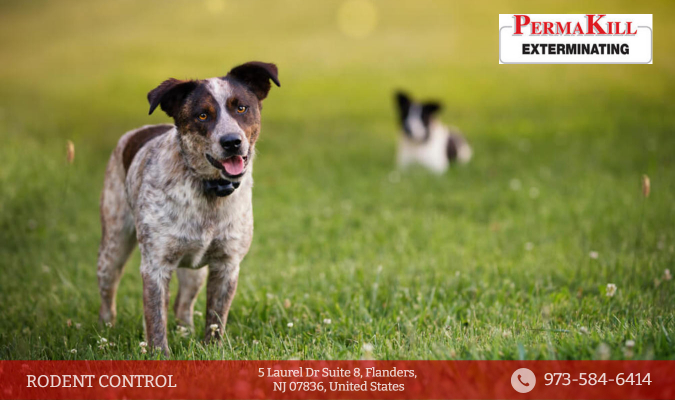


Nobody wants to have rats in their homes, whether they’re inside the house or outside in the yard. If these pests are camping in the yard, they are guaranteed to damage the plants, bring diseases, and bring harm to any pets you may have.
So are there pet-friendly ways to eliminate rats in the yard? Get rid of these pests without harming your beloved cats or dogs by:
Using rodenticides and rat poisons can be harmful to pets. In 2019, the ASPCA Animal Poison Control Center (APCC) listed rodenticides as the 7th most harmful pet toxin. The agency observed a 6.8% increase in the reported cases of poisoned pets caused by rodenticide exposure. Pets that come in contact with rodenticide experience seizures, kidney failure, bleeding, and death.
To ensure that your pets stay safe when eliminating rats in the yard, here are a few pet-friendly ways to get rid of these rodents:
Rats invade the yard because they found something attractive in that place – maybe a stable food and water source, a pile of trash, or some materials for building a cozy nest. Once the source is eliminated, rats no longer have a reason to stay on the property. Instead, they leave to find another place that can provide them with their survival needs.
If there is a compost area in the yard, ensure that it’s sealed or secured with chicken wire to keep the rats out. Ask the neighbors to keep their yard clean at all times because rats can easily travel from one yard to the next.
Roof rats, one of the most common rat species, are excellent climbers that utilize tree branches as a pathway to enter the house. If there are large trees in the yard, make sure to prune the branches regularly so that they are not directly connected to the house’s roof.
Aside from using the trees as an entry point to the home, the pests also utilize the shrubs and other vegetation as cover when strolling around the yard. Some of them even live inside the shrubs or other dense vegetation. Even if they don’t stay in the shrub for long, they will gather some of the plant materials and use them to build their nest.
Installing a bird feeder in the yard is an excellent way to attract different birds and watch them when you’re relaxing outdoors. However, these feeders are also attractive to rats. Like birds, rats are also fond of eating seeds – on top of their taste, seeds are also easy for rats to carry back to their nest.
Even if the bird feeders are placed high above the ground or on tree branches, the seeds that fall ends up attracting rats. If there is an ongoing rat infestation on the property, it’s best to remove the bird feeder for a while.
The same thing also goes for bird baths. These man-made basins are a good source of water for these pesky rodents. Just place the bird baths and feeders in the yard once it’s confirmed that the rats are gone from the property.
It’s a good idea to let the pet roam free in the yard because their scent can help scare rats away. Just remember to keep an eye out for their droppings and make sure to clean up after them immediately.
Rats are filthy animals that eat feces to survive if necessary. Your pet’s poop has the right amount of nutrients for these rodents to survive. Take away the rat’s food source by picking up all the pet waste around the yard.
Aside from shrubs, man-made structures are also a favorite nesting place for rats. They will make themselves at home under garden sheds, wood decks, and gazebos. It’s a bonus for the rats if these structures are close to each other, as this gives them more space for their nest.
The best thing to do is to move the sheds and gazebos away from other structures. Place them in an area that has a lot of open space on all sides. It’s also important to completely block access beneath these structures because rats can squeeze through holes the size of a quarter.
You can also put rocks around the structure’s perimeter to block the rodents out. Just make sure to fill the spaces with mortar. Before fixing the gaps or moving the structures, ensure that there are no rats in the nest first. If you trap them in their nest, they will dehydrate and die there. This will make it difficult to extract and dispose of their carcass.
Rats have a strong sense of smell that they use to sniff the food and find predators. Their noses are essential to their survival, which is why they will stay away from places with smells that mess their senses.
Since peppermint oil is a popular home repellent because of its strong odor that irritates the rat’s nasal passage, planting peppermint in the yard may help keep them out. Place the plant in areas where these pests frequently visit. Planting the peppermint around the house’s perimeter can also prevent them from entering through wall gaps and holes.
There are tons of rodent poisons available in the market, so you’re bound to find one that’s also pet friendly. These rat poisons are typically made with ingredients that swell up inside the rodent’s digestive tract when swallowed, causing them to dehydrate and die. What makes them safe for pets is that dogs and cats can throw up the poison easily.
However, it’s essential to frequently check the areas where the poison was applied to see if there are dead rats. Cats, dogs, and other house pets can still contract diseases from a dead rat, so make sure to properly dispose of the rat carcass immediately.
If you want to show these pests some mercy, there are live traps and other humane rodent traps available in the market. They are created to catch rodents, like mice, rats, and chipmunks, without killing them.
Since live traps typically use non-toxic baits, there won’t be a big problem if the pets accidentally ingest the baits. Like other traps that could kill rats, it’s also crucial to frequently check live traps to see if the bait needs to be refilled or it already managed to catch a rat.
Here at PermaKill Exterminating, we utilize the right skills and rodent removal techniques to ensure that your family and pets are safe during the extermination. For more effective pest control, we guarantee to incorporate the IPM approach in our services.
Rodent problems at home? You can count on PermaKill Exterminating to safely eliminate the rats and keep them from coming back. Call us now to get a free estimate.
Learn more: How To Get Rid Of Roof Rats In Walls